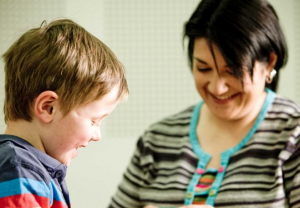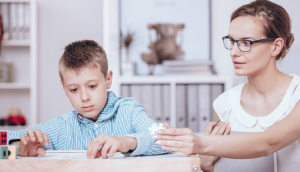How do you know when it’s autism and when it’s a personality trait? Australian screening test hailed as ‘most successful in world’
Posted on
Autism is widely misunderstood, a fact made glaringly apparent when Amaze this year released Community Attitudes and Lived Experience of Autism research.
The findings reveal nearly all Australians (98%) have heard of autism, and 86% of people have contact with an autistic person. One in five people has an autistic friend, and one in four has an autistic relative.

Dr Barbaro’s test has incredible accuracy.
- Yet despite the widespread awareness and personal connection, only 29% of respondents said they know how to support an autistic person.
And when the researchers asked the same question of autistic people, only 4% of them believed people in the community knew how to support them.
The lack of understanding can result in fear when parents receive a diagnosis for their child.
Some parents, however, say receiving a diagnosis can be a huge relief as the supports now available can make a world of difference their child.
So what are the signs of autism and, once you get a diagnosis, what’s next?
Dr Josephine Barbaro is a Senior Fellow at Latrobe University’s Autism Research Centre. Her autism screening test is being hailed as the “most successful in the world”.
At present, screening tests for 1 to 2-year-olds are at best 6% accurate. Dr Barbaro’s test, that routinely monitors children at routine health check-ups, is 82% accurate.
She recently spoke to ABC radio national’s Amanda Smith about the diagnosis process.
It was explained that the test will be part of the routine maternal and child health checks for all children in Victoria.
“Currently many of the screening tools for autism in the age range that I work in, from one to two years of age, the most accurate that we’ve seen is around about 6%. Very, very inaccurate ,” Dr Barbaro says.
“But our methodology, where we routinely monitor children at their routine health checks, has an accuracy of 82% in identifying children.

Dr Barbaro advocates for a ‘developmental surveillance’ approach.
- “We advocate for what we call a developmental surveillance approach. So we train our maternal child health nurses, our early childhood educators, to look for these very early behavioural signs.
“These kinds of signs are called social communication behaviours, so differences in the way a child looks at you, in their use of gestures, in the way they respond to their name.
“When a child is not engaging these kinds of behaviours, then they are more likely to be on the spectrum than not.”
How do you know when it’s autism and when it’s a personality trait?
“There is no black and white in human behaviour,” Dr Barbaro adds.
“There are always grey areas. Many of us do have traits that individuals on the spectrum have. Many of us can have difficulties in social situations or have sensory sensitivity.
“Myself, I’m very, very sensitive to strong smells like petrol. It gives me a headache. But the difference is I don’t present with difficulties in multiple domains _ in social communication areas, in repetitive behaviours, and it doesn’t impact on my life on a day to day scale.
“When it functionally impacts on someone on a day to day scale, that is when it can become a diagnosable condition.
“The current prevalence rates are about 1 to 2% of the population, about one in 50 individuals, so it’s not a rare condition.”
Asked why early diagnosis is important, Dr Barbaro says: “Because of children’s brain plasticity very early on we can take advantage of that and help change children’s developmental trajectory.
“So we can give supports and services as early as possible, not just to the child, but the family, and improve their outcomes.
“In our children, diagnosed earlier, only 8% of these children went on to have an intellectual disability, compared to 24% of children diagnosed later.
“That is a huge difference and it also leads to more children being integrated into mainstream schooling, requiring less ongoing support. It really does help children in the long term.”
Dr Barbaro says if parents suspect their child has autism they should speak to their maternal child health nurse and explicitly state their concerns. If the response is dismissive, Dr Barbaro adds, parents should seek a second, or even third opinion.
“We also have an app called ASDetect, which is free, based on this test we are rolling out in Victoria.
“Parents can use it for children aged 11 to 30 months and it systematically helps them through a questionnaire with videos on whether or not their child may be displaying the early signs.”
You can listen to the full Dr Barbaro interview here
Further information
- Fact sheet – General understanding of autism and social isolation
- Do One Thing for Autism campaign
- The Journal – personal stories from autistic people
